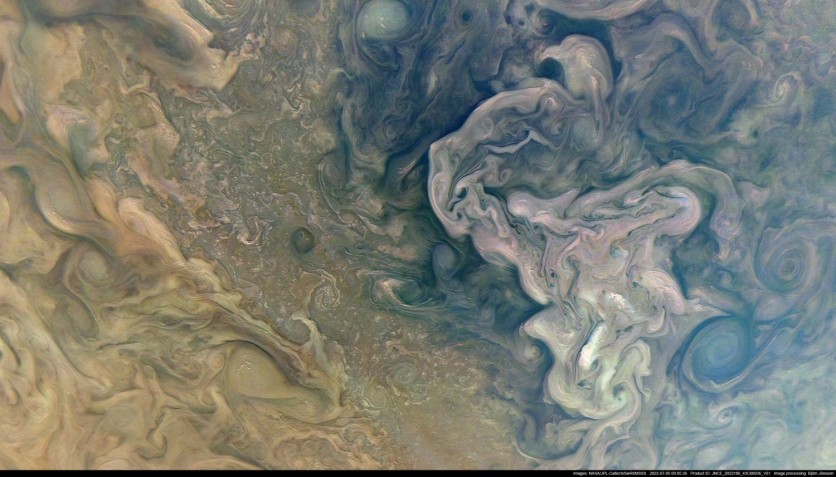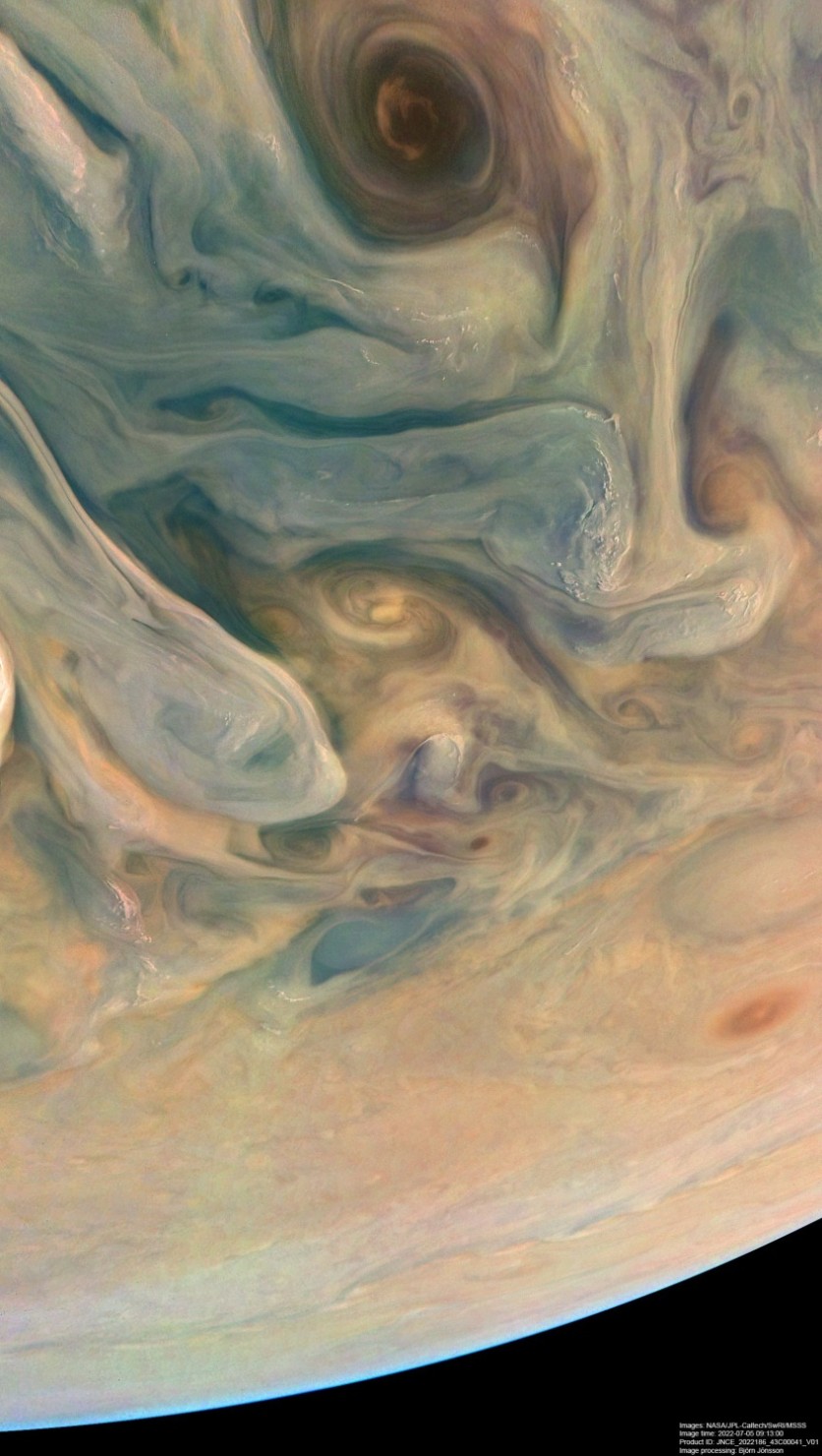The largest planet in the solar system's tumultuous atmosphere is depicted in a new photograph taken by NASA's Juno spacecraft in the same hues that a human observer would see with naked eyes, as reported first by Space.com.

Jupiter's True Colors
Using its JunoCam instrument, Juno captured the picture on July 5, 2022, during its 43rd close flyby of Jupiter. The picture was captured as the spacecraft flew by at 130,000 mph at a distance of 3,300 miles (5,300 km) from the gas giant's clouds.
Björn Jónsson, a citizen scientist, developed two photos using the raw data from Juno. The view as it would look to a human viewer from Juno's perspective is depicted in several images on the left.
Jónsson digitally boosted color saturation and contrast in the image on the right, bringing forth the complex architecture of the planet's atmosphere.
Image PJ43_41 obtained by @NASAJuno on July 5, 2022. Approx true color/contrast and greatly exaggerated versions where contrast has been increased, color saturation increased and small scale details sharpened. Also special processing to reduce noise and compression artifacts. pic.twitter.com/RzWqsJUCQH
— Björn Jónsson (@bjorn_jons) July 21, 2022


The enlarged image's color changes show the three-dimensionality of the intense storms swirling in the planet's clouds and variations in the chemical composition of various regions of Jupiter's atmosphere.
It is also possible to see the brilliant "pop-up" clouds in the upper atmosphere. The region in the picture is located at a latitude of roughly 50 degrees north.


All About NASA's Juno
Since its launch in 2011, Juno has been investigating the gas giant planet. One lap of the planet's eccentric orbit is completed every 43 days when the probe periodically dips near the planet's swirling clouds.
Juno descends to a distance of around 3,100 miles (5,000 km) above the planet's clouds at its closest approach.
The Jupiter explorer won't stop operating until at least 2025, as opposed to its initial 2021 retirement date. Citizen scientists can explore, analyze, and classify JunoCam photos since the Southwest Research Institute in San Antonio, which developed the instrument, makes the photographs accessible on the JunoCam image processing website.
Related Article : Jupiter Wields High Metal Contractions That Could Indicate Its Origins, Researchers Find
This article is owned by Tech Times
Written by Joaquin Victor Tacla
ⓒ 2025 TECHTIMES.com All rights reserved. Do not reproduce without permission.




